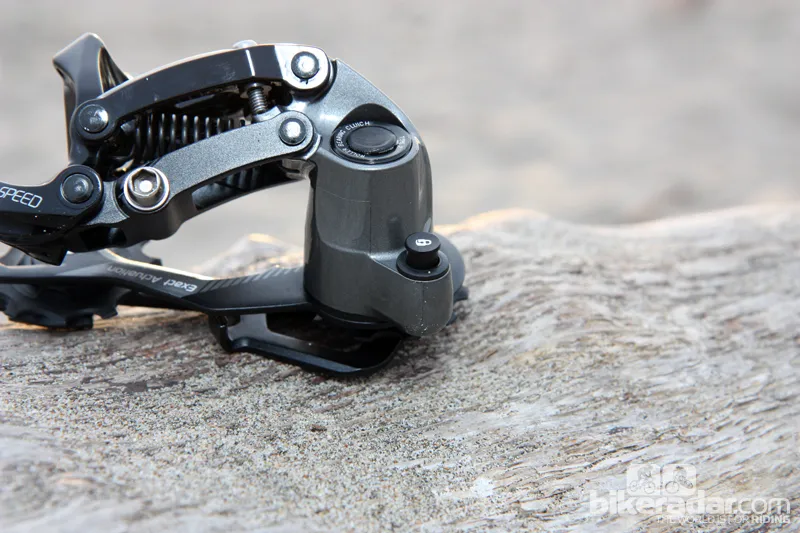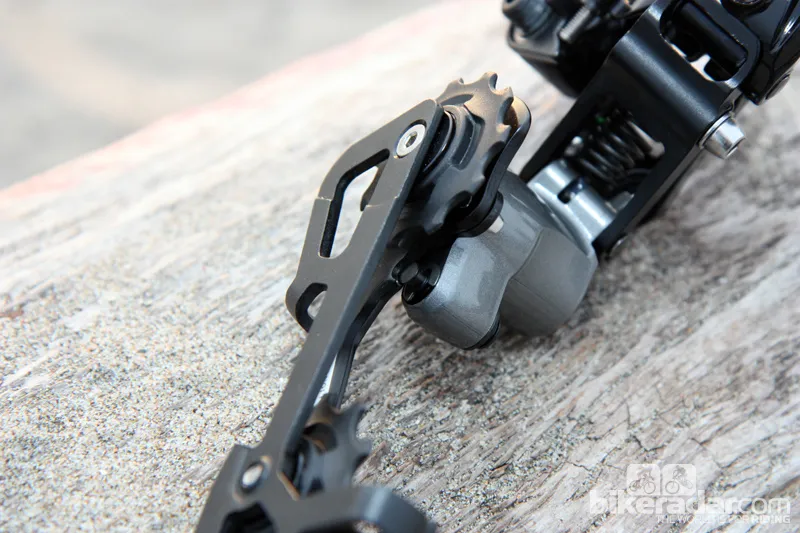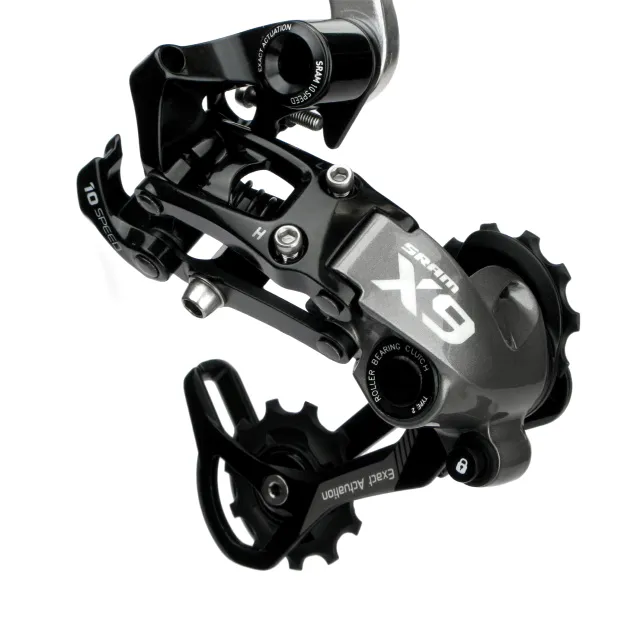Following intense speculation, SRAM have unveiled a clutch-equipped rear derailleur to rival Shimano's XTR Shadow Plus design.
The Type 2 mech, which will be available in both X0 and X9 guise, has a clever mechanism inside its otherwise-standard lower knuckle that combats excess chain movement on rough terrain. After riding it for two solid days, we can not only say that it works but that it's a genuine game changer.
The SRAM and Shimano clutch rear derailleurs are similar in design intent – in both cases, forward pulley cage movement is permitted, but significantly restricted in speed – but their methods are quite different. Shimano opt for an adjustable steel band lined with friction material and clamped around the pulley cage shaft, while SRAM have built a miniature one-way roller clutch that — ironically enough — is similar to the guts inside Shimano's old Silent Clutch rear hub.
SRAM argue that while the Type 2 derailleur is perhaps more complex in terms of design, it's simpler to use than Shadow Plus. There's no on-off switch to overlook, the friction level is factory set, and it supposedly requires no maintenance. (While Shadow Plus involves an initial break-in period and periodic adjustments afterward, SRAM say the even, 360-degree arrangement of needle bearings about their pulley cage axle's self lubricating polymer liner sleeve will yield consistent friction characteristics over at least five years of frequent use.)
Shimano's Shadow Plus toggle switch was included to address wheel changes, which a one-way friction device can undoubtedly complicate. SRAM's clever Cage Lock system – which we at BikeRadar mistakenly identified as a clutch on-off switch back in January – instead comprises a simple push-button stop that locks the pulley cage in an extreme forward position.

We originally thought the 'lock' button was for the internal roller clutch mechanism but we now know it's used to lock the pulley cage in place for easier wheel changes
There's a certain knack required to engage it but it's simple to learn and eliminates chain tension for fast (and clean) wheel changes. Cage Lock isn't entirely necessary but given the simplicity of the setup, it's nice to have nonetheless. And lest you forget to unlock the cage, it quickly unlocks itself after one or two bumps on the trails.
Naturally, adding such extra features bring some extra complexity and mass – in this case, 30g according to SRAM, for total claimed weights of 235g for X0 Type 2 and 250g for the X9 version. Component companies often move heaven and earth in order to shave 30g from a part but in this case, that penalty is in our minds inconsequential when compared to the system's tangible advantages.
We tested pre-production Type 2 samples on some of the highly entertaining (and often challenging) trails in Santa Cruz, California and came away tremendously impressed. Despite not having any sort of proper chain retention system on our Giant Reign and Yeti SB-66 test rigs, we never once came close to losing a chain even after countless jumps and eye-watering descents when we were chasing current and ex-pro riders and clearly in well over our heads.
Moreover, Type 2 yields a gloriously quiet drivetrain. We intentionally ran test bikes in especially challenging 26-11t gear combinations on fast, bumpy trail with no chain slap to speak of – even on the Yeti and Giant's oversized aluminum stays. There's also no perceptible change in shift lever effort.
Unable to load media
Video: SRAM Type 2 derailleurs
In essence, it's all benefit with virtually no downsides. In fact, we'd argue that in terms of overall performance, a Type 2 X9 rear derailleur will trounce a standard X0. Retail pricing is even competitive with the standard versions, at US$260/£231/€195 for X0 and $116/£103/€87 for X9 – both in three cage lengths, multiple colors, and landing in stores in August.
SRAM PR man Tyler Morland tells BikeRadar that the company don't have an official forecast for how many riders will choose the Type 2 design over the standard, lighter variants. They admit the concept's benefits don't immediately come across on paper (or on screen, in this case, though the on-bike video should help). However, we expect that once word gets out — like it already has with Shadow Plus — the adoption rate will be nearly 100 percent.
While Morland argues that SRAM XX buyers are likely too weight conscious to opt for a Type 2 mech, we're still crossing our fingers that the roller clutch design will eventually finds its way there too. After all, cross-country competitors should be able to appreciate extra chain security on rough terrain and it's not like XX is only found on traditional race bikes.
Morland says we can expect the clutch design to make its way downstream, however, meaning we'll eventually see Type 2 at the X7 and X5 level. "I think you'll see it trickle down heavily in the next couple of years," he says. Provided Type 2 lives up to its billing long-term, we'd say that's not soon enough.

Retail price of the new SRAM X9 Type 2 rear derailleur is just $116. At just a 15g weight penalty over the X0 version, this looks to be the performance bargain of the two








